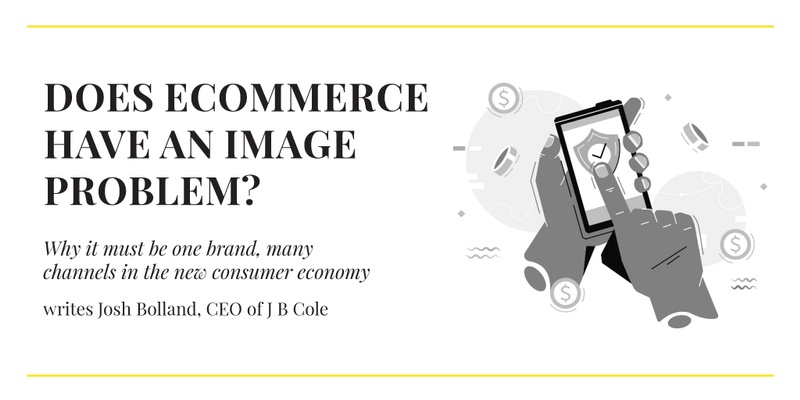
Has the time finally come to stop calling it eCommerce? In the minds of our team at Bolland & Co, it’s just been commerce for a long time now.
Nearly three years ago, Forbes talked about the death of eCommerce. This was nothing to do with declining online sales or a preference for high-street shopping. It was in fact a recognition that consumers don’t necessarily distinguish between the online and offline worlds. For customers, it’s just one brand, many channels.
Fast forward three years — and one pandemic — and the one brand, many channels approach rings true more than ever.
2020’s big pivot
We all know the details of lockdown. There’s no need to go into it again. But the key point to highlight in the context of one brand, many channels is consumer desire. Regardless of what life is throwing at them, consumers want the favourite products that they usually consume.
And as we face increased winter restrictions and further isolation, this desire to continue consuming is yet again, becoming increasingly important. Those savvy brands that understood this during the initial lockdown were able to quickly pivot and enhance their online offer. This firstly catered to consumer demand and secondly offered their businesses an essential lifeline.
Some of these pivots were more expected than others. Consider the likes of London’s top fish and chip shops putting in place an eCommerce website and delivery operation within a couple of weeks. Beer brewery ShinDigger in Manchester hit the right note with their free delivery within the M60, while Bolland & Co was involved in bringing the offline experience of trying on a wedding dress online.
Yet, 6 months later, this has now just become the norm. In fact more than 85,000 UK businesses launched online stores or joined online marketplaces between April and August 2020. There won’t be any going back for these organisations.
And while this of course is key for the B2C market, more and more B2B businesses have been forced to replace traditional sales channels with eCommerce offerings too. Even the most traditional of businesses are recognising the need for an online presence – one brand, many channels.
But what does this mean for those businesses behind the scenes? And with increasing demand how are retailers coping?
The essential need for integration
The face of your eCommerce operation is the easy part. Creating a customer facing eCommerce experience is fairly simple. The speed at which many brands did this during lockdown was impressive. And many of these did provide intuitive user experiences.
But viewing it through the prism of the one brand, many channels approach highlights the importance of long-term thinking. A shiny new website might cater to short terms sales, but long term business efficiency and stability is built on integration.
Without digital integration across eCommerce, supply chain and finance, it is virtually impossible to achieve efficient cross-channel fulfilment. If there is a disconnect between your website and your warehouse, staff will spend hours manually inputting information. Mistakes can be made; time will be lost and inefficiencies begin to spiral out of control. When efficient connections are made and integrations in place, staff can better spend their time serving the needs of customers.
And by bringing all of your channels together, you can begin to build data streams to gleam more customer insight. This is truly the foundation on which to build the one brand, many channels approach.
By adopting this mindset and approach, you can begin to cater to your users intuitively. Cross-channel fulfilment, for example, enables customers to pay using one channel, receive items using a second, and return items using a third. A shared inventory means customers have complete up-to-date access to all products no matter how they choose to shop, and a complete order history across all channels means seamless customer experience.
It’s not enough to just understand the one brand, many channel approach; it’s a mantra that should be lived and breathed across all areas of your operation.
Black Friday, Cyber Monday and Corona-Christmas
The big numbers around eCommerce sales during Q2 and Q3 this year suggest online shopping is quickly becoming the preference of consumers. Overall online retail sales in June surged 33.9% YoY to a 12 year high.
This will likely be backed up by the fact that 40% of shoppers who’ve returned to physical stores find the experience less enjoyable that pre-Covid-19.
And while this might be the case, we’re still heading into uncharted waters around the big Q4 shopping days.
So, what do the stats tell us?
We know that around one in four brands expect to perform better this Black Friday than in previous years. Yet 70% of retailers also haven’t changed their plans for Black Friday and Cyber Monday, despite the impact of COVID-19. We also know that 3 out of 4 global shoppers plan to spend their usual festive budgets come Christmas, and that mobile will once again play an increasingly important role.
With the usual surges in website traffic during Black Friday and Cyber Monday potentially bigger than ever, a consumer that is difficult to predict and pin down, and increased winter restrictions, seamless cross-channel commerce will undoubtedly be put to the test in a Q4 like we’ve never seen before.
One brand, many channels has to be the mantra.

For more insights and articles, check out the second issue of The Colectiv – a digital publication from Bolland & Co.